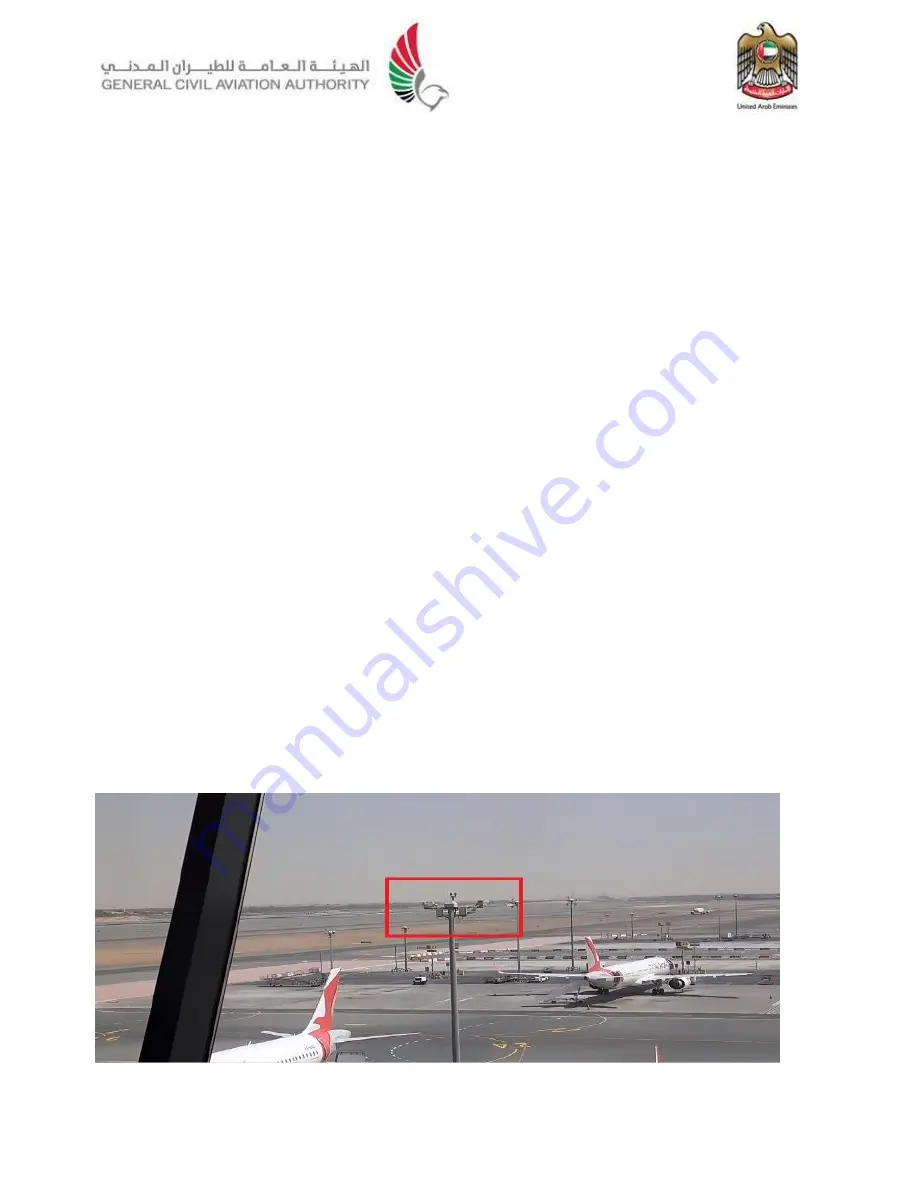
Final
Report № AIFN/0010/2018, issued on 10 January 2022
12
Additionally, for ABY111 Incident , the following was confirmed by the Investigation:
Lead-on lights for runway 30 that were installed after stop-bar at Bravo 14 were OFF
The uni-directional runway 30 edge lighting was at 30 percent setting
The active runway, runway 30, in use was broadcasted on the air traffic information
system (ATIS).
1.10.2
Air traffic control standby tower
The air traffic control standby tower was in operation during the time of Incident. Appendix
B of this Report illustrates the location of the standby tower. The Investigation documented the
following during the daylight visit to the standby tower air traffic control room:
As illustrated in figure 9, a light pole at parking stand 24 obstructs the line of sight of
the controller for aircraft at Bravo 14 runway holding point.
From the assigned Tower and Ground positions, an A320 aircraft holding short of
Bravo 14 stop bar, was not visible from the c
ontroller’s seat.
The controller’s line of sight for taxiway Bravo 14 intersection with runway 12/30
extends approximately 1 kilometer.
The height and location of the standby tower reduced the controller’s visibility of
runways, taxiways, and maneuvering areas.
However, the controller’s is able to
move himself/herself to have a better view of aircraft at the holding point Bravo 14.
Bravo 14 intersection with runway 12/30 was not monitored by the closed-circuit
television (CCTV).
There was no surface movement radar in the standby tower and none installed at
Sharjah Airport.
During taxi and take-off clearance, the controller stated the active runway in use.
The controller accurately confirmed the readback by the flight crew.
The controller had no provision to override a transmission from another flight crew.
Figure 8.
Standby tower obstructed view of an Airbus A320 aircraft at Bravo 14 holding point
















































